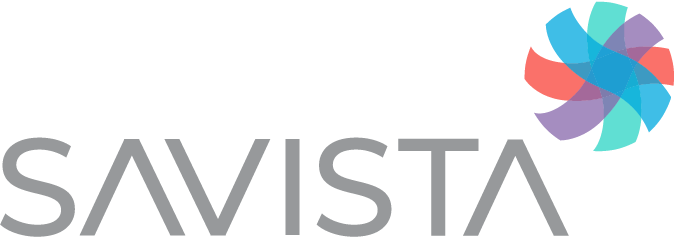Frequently Asked Questions
Have Questions?
We've got answers. Here are some answers to questions we frequently hear.
Traditionally, the revenue cycle is viewed as a linear progression that follows a patient's related clinical and financial record through an overall process. The Front typically covers patient registration and financial clearance. The Middle is typically reserved for clinical documentation processes such as Coding, CDI and HIM functions and the Back focuses on billing and collecting outstanding amounts to various groups (e.g. Insurance companies or patients). Each of these areas contain functions, sub functions and nuanced roles. However, rarely do any of these processes occur in a silo and are interconnected, thus creating more of a "web" rather than simply "moving through the front, middle and back". It's also important to note that patient consumerism is playing a bigger role in healthcare which is disrupting the traditional revenue cycle view.
The stages of the revenue cycle are as follows:
Front End: Patient Access (Insurance Verification, Pre-authorization)
Middle: Service Delivery (CDI, Charge Capture, Coding)
Back End: Receivables Resolution (Claims, AR Follow Up and Denials Management, Collections)
The most important stage of the revenue cycle is the one that isn't working well. Almost all processes are interrelated and problem areas can have effects across the revenue cycle. It's important to identify the root cause of revenue cycle issues and then find the most efficient way to address those issues. Sometimes the answer is simply better adherence to existing policies and procedures or a quick "refresher" training. Sometimes it's about finding a partner who can augment your existing team and directly work components of the revenue cycle.
Each stage of the revenue cycle is important and necessary but there are imperative tasks for timely, optimal reimbursement.
- Pre-registration: accurate patient information should be collected, and all prior authorization determinations made. Patient financially cleared for point of service.
- Point of service: collect patient portions for service including copay or self-pay balances
- Claim submission: appropriate codes supplied on patient claim along with all necessary documentation to support
- Claim follow up: any factor could cause the payer to deny the claim. Follow up is important to determine correction or appeal.
- Patient liability collections: providing accurate statements and follow up for collection of payment balances. If it turns to bad debt (generally over 120 days), it is imperative to follow state guidelines and regulations for compliant collections.
Best practices range depend on the revenue cycle function in question, but generally hospitals should staff according to the productivity levels and volume for their organization to minimize uninsured patients, lower DNFC, maximize collections, decrease AR days, and ensure regulatory compliance. If this can't be achieved with local resources or if the cost to collect is too high, then health care organizations should consider partnering with an experienced revenue cycle management firm that can tailor a solution to meet their specific needs.
Revenue cycle best practices are as follows:
- Put the patient at the center of the process.
- Collect patient responsibility prior to services rendered.
- Ensure you have exhausted the search for coverage for uncompensated care.
- Optimize your chargemaster as it’s foundation for all charges.
- Ensure accurate and appropriate coding.
- File claims in a timely manner.
- Manage/prevent denials.
Healthcare facilities can cut costs by assessing their revenue cycle for opportunities to optimize processes and workforce. Ensure your technology is optimized and used to the fullest of its capabilities. Improve supply chain, streamline management structures and improve patient throughput.
Consider the following:
- Optimize your current technology before adding additional tools
- Evaluate if you can remove technology costs by utilizing other, more cost effective technologies by updating and streamlining workflows and processes
- Streamline management and reporting hierarchy structures
- Utilize partners to assist with difficult or less valuable scopes of work so you can redeploy your existing resources to higher value work efforts
- Leverage partners to gain access to additional skilled labor resources, such as global resources, that can provide the same talent at a fraction of the cost
- Carefully evaluate and potentially reduce patient points of entry
- Look for opportunities for revenue improvement such CDI, Zero Balance Reviews and Denial Prevention strategies
The best way to evaluate your revenue cycle performance is through careful evaluation of your organization's KPIs and metrics compared to both applicable industry standards and trended over time. The trend over time can highlight areas that have degraded or improved and will allow you to decide where you should spend more time understanding the reason for potential problems. Comparisons to industry standards are also helpful, but be sure you have a clear understanding of what type of providers make up the 'standard'. If those providers are not similar to you in regards to size or patient population, then the comparison might not be very helpful.
Monitoring your revenue cycle is crucial for maintaining financial stability and ensuring the sustainability of your operations. Familiarizing yourself with essential Key Performance Indicators (KPIs) pertaining to accuracy, productivity, and reconciliation is paramount. Ensure diligent measurement against these type of benchmarks for all areas of operations. As you see potential areas of concern, work toward understanding and addressing the root cause as quickly as possible.
Keep a watchful eye on leading indicators such as patient registration error rates, Coding accuracy and days in Discharge Not Final Coded (DNFC). Deterioration of these metrics typically lead to an increase in elevated initial denial rates, revenue leakage and ultimately increased Accounts Receivable (AR). These metrics serve as general barometers for potential issues within the revenue cycle. Regular monitoring and analysis of these factors are essential for identifying areas of improvement and maintaining a robust financial foundation for your hospital.
It is important to assess various platforms based on factors such as cost and the size. Before making any transitions or additions, it's crucial to determine if new technology is truly necessary and if your current technology has been fully optimized. In many cases, the key to enhancing the Revenue Cycle lies not in updating technology, but rather in refining processes and maximizing utilization. Therefore, prioritize process improvement and utilization assessment alongside technology evaluation to ensure the most effective approach to revenue optimization.
The CDM is vital to ensuring financial health, clinical efficiency, and compliance within a healthcare organization. Ongoing maintenance is imperative to ensure everything is kept up to date and in compliance, but it's also important to do an annual deep dive of every CDM line item and charge capture processes across all clinical departments. An annual deep dive ensures that all billable services are being captured accurately, charges are in line with the market, and any regulatory changes are reflected in revenue integrity policies.
Revenue cycle outsourcing is utilizing a partner to either supplement current staff or fully take over revenue cycle processes from healthcare organizations. This could include any of the revenue cycle functions including patient engagement, HIM, coding, AR management, and revenue integrity. Resources utilized by a partner can be domestic based, offshore or a combination, allowing for increased productivity and cost savings.
Whether you should outsource your revenue cycle depends on the goals of your organization and the root cause issues you are currently facing. A complete outsource can make sense especially when faced with staffing shortages and a lack of overall expertise to handle the more complex revenue cycle processes. In other cases, it might make most sense to augment your current team with a partner who can take on a specific scope or skill set. In any scenario, it's paramount to understand what you are trying to accomplish, how you are defining success and then finding a partner that fits your organizational culture and can easily flex to meet the needs and goals of your organization.
Pros of revenue cycle outsourcing:
- Steady & flexible resources
- Operational cost savings
- Increased revenue and performance
- Dedicated & specialized staff
- Increased efficiency and accuracy
- Able to redirect focus to patient care
- Reduced compliance risk
Cons of revenue cycle outsourcing:
- Still need to manage the relationship with the partner and review performance
- Slightly less ownership of process
- Must diligently maintain communication coordination between partner and other internal teams
- Management of security and privacy practices
In a revenue cycle services provider you should look for a vendor who:
- Does not subcontract to other vendors.
- Deploys a trained workforce.
- Analyzes processes and offers areas of improvement.
- Focuses on revenue cycle KPIs.
- Provides dedicated, responsive teams.
- Automates processes whenever possible.
- Helps scale your business.
- Collaborates effectively and provides valuable reporting.
Depending on the service area, breadth of scope and data access needs, implementation should take anywhere from 60 to 120 days with value realization following closely behind.

